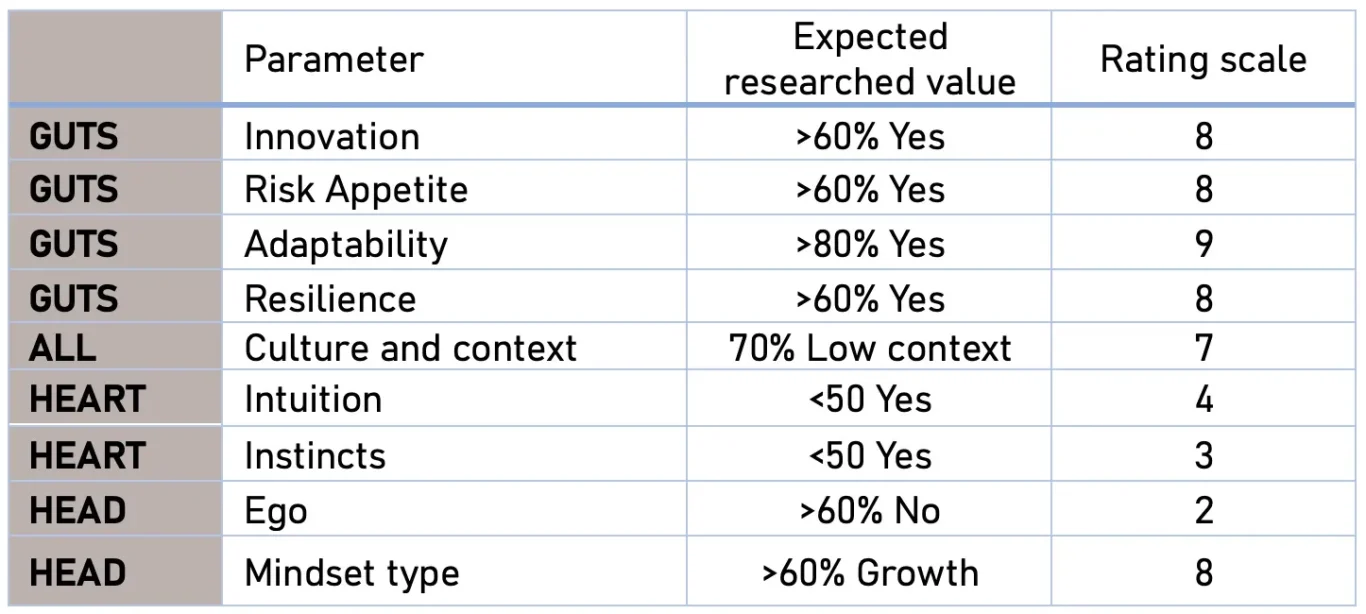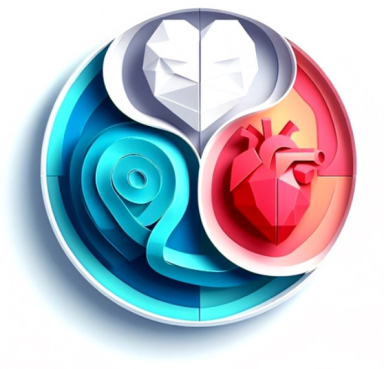CPF Framework — Implementation Phase
Sculpting the IT Transformation Vision. A Strategic Guide
Many organizations need help with crafting their IT transformation vision. It is often more beneficial to begin by establishing the Core Personal Foundation Company Barometer rather than rushing into the details of the IT transformation vision. This foundational step not only lays the groundwork for a more effective and coherent transformation but also underscores a profound connection to the company's culture and values.
The Core Personal Foundation Company Barometer serves as a guiding compass, steering the organization through the dynamic landscape of IT transformation. It enables a profound understanding of how the proposed changes align with the company's inherent identity. This alignment is essential to ensure that the transformation is not merely a series of technical adjustments but a holistic evolution that resonates with the heart and soul of the company.
Furthermore, this approach fosters the sustainability of IT transformation efforts. By anchoring the vision in the company's values, it is better equipped to withstand the test of time and adapt to evolving needs.
Establish the Core Personal Foundation Company Barometer (CB), a quantifiable metric that balances an organization’s HEAD, HEART, and GUTS, created by the Main Stakeholder Group (MSG).
The CB determines whether your company is more emotionally driven, people-centric, or more risk-taking and bolder. It channels how the leadership will assess IT transformation progress, related behaviors, and outcomes. The CB serves as a metric that helps everyone understand the intended direction of the company’s leaders. It provides a platform for trust, stability, and guidance.
Assessing in what ratio HEAD, HEART, or GUTS drive your company involves examining various aspects of its culture, decision-making processes, and values.
Here’s how you can assess which approach prevails:
- Values and Mission — review your company’s core values and mission statement. If values like ethics, empathy, and social responsibility are emphasized, it indicates a HEART-driven approach.
- Leadership Styles/Decision-Making Processes — analyze how decisions are made within your organization. A HEAD-driven company may rely on data, analysis, and rational decision-making. A GUTS-driven company may opt for instinctual and bold choices. A HEART-driven company may prioritize the well-being of employees and stakeholders.
- Employee Feedback — collect feedback from employees through surveys or focus groups. It can provide valuable insights into how employees perceive the company’s culture and values. High employee satisfaction and well-being suggest a HEART-driven approach.
- Customer Relations — assess how your company interacts with customers. A HEART-driven company may prioritize personalized service, long-term customer relationships, and social responsibility. A GUTS-driven company may emphasize bold product launches and innovation.
- Innovation and Risk-Taking — consider the company’s approach to innovation and risk. A GUTS-driven organization may encourage risk-taking and entrepreneurial initiatives, while a HEAD-driven company might prioritize data-driven innovation and calculated risks.
- Philanthropic and Social Responsibility Activities — analyze the company’s involvement in philanthropic and social responsibility activities. A HEART-driven company may engage more in social and community causes.
Indeed, the elements mentioned are illustrative examples. The company has the flexibility to determine and select which specific elements it wishes to evaluate. The choice of elements for evaluation should align with the company’s unique goals, objectives, and the aspects it considers most critical for assessing its organizational dynamics and performance. The flexibility to select and customize these elements allows the company to tailor its evaluation process to its specific needs and priorities.
After that, during the Main Stakeholder Group Alignment Meeting, the Main Stakeholder Group (MSG) establishes the Core Personal Foundation Company Barometer (CB). It is achieved by assigning percentage values to each primary group (HEAD, HEART, GUT). For instance:

In our example, The Core Personal Foundation Company Barometer (CB) reveals a distribution of 47% for GUTS, 33% for HEART, and 20% for HEAD, indicating a pronounced inclination toward a GUTS-driven approach to IT transformation.
This suggests that the organization significantly emphasizes traits such as bold decision-making, risk-taking, and an instinctual approach, especially when dealing with uncertainty.
- A GUTS-driven approach implies that the organization is willing to take well-considered risks, encourage rapid innovation, and often prioritize entrepreneurial strategies that involve bold and daring moves.
- The secondary component, represented by the 33% allocation to HEART, underscores the organization’s values related to empathy, ethics, and social responsibility. This focus extends to areas such as employee well-being, ensuring customer satisfaction, and active engagement with the community.
- Lastly, the HEAD-driven aspect, constituting 20% allocation, signifies the organization’s commitment to data-driven decision-making, thorough analysis, and a rational, logic-based approach to problem-solving and decision-making.
These elements collectively influence the organization’s approach to IT transformation and guide the decisions and strategies that align with its cultural dynamics and objectives.
The results imply that prioritizing GUTS-related parameters is key for the next phases, and these should carry more weight when assessing transformation team members. Please note that this is only an example. In your company, values can differ, indicating different approaches.
Create Parameter Cards (PC)
Once the Core Personal Foundation Company Barometer (CB) outcome is determined, the Main Stakeholder Group (MSG) can initiate the creation of Parameter Cards (PC). The (PC)s are designed to assess every IT transformation member, enabling the identification of experts who align with the approach outlined in the Core Personal Foundation Company Barometer (CB). However, it’s crucial to emphasize the importance of maintaining a diverse workforce. Diversity in perspectives and backgrounds can significantly enhance innovation and problem-solving in a GUTS-driven company.
Assessing the technical qualifications and certain behavioral traits, values, and feelings that align with a culture that emphasizes bold decision-making, risk-taking, and adaptability is essential.
Mentioned below represent only GUTS artifacts. Your company should use a broader set related to your Company Barometer (CB) and cover HEAD, HEART, and GUTS artifacts.
Key aspects to consider
- Innovation — Assess candidates’ ability to think creatively and bring innovative solutions. Innovation is a critical component of a GUTS-driven culture.
- Risk Appetite — Look for individuals with a natural appetite for risk and are comfortable with ambiguity. They should be open to trying new approaches, experimenting, and making bold decisions even in uncertain situations.
- Entrepreneurial Spirit — Seek candidates who exhibit an entrepreneurial mindset. They should be proactive, innovative, and eager to identify opportunities for growth and improvement. Entrepreneurial individuals tend to thrive in a GUTS-driven environment.
- Confidence — Confidence is crucial in a GUTS-driven culture. Look for individuals who are self-assured and can make decisions without constant reassurance. They should have confidence in their abilities and ideas.
- Resilience — A GUTS-driven environment often involves dealing with setbacks and failures. Assess candidates for their resilience and ability to bounce back from challenges. Resilient individuals are more likely to persevere in the face of adversity.
- Decisiveness — Seek decisive professionals who can make quick, informed decisions. They should be comfortable taking ownership of their choices and adapting when necessary.
- Adaptability — Look for candidates who are adaptable and can embrace change. Guts-driven companies often require employees to pivot quickly in response to evolving circumstances.
- Context — High-Context and Low-Context are concepts in the field of communication and cultural studies that describe how different cultures and communication styles rely on varying levels of context to convey meaning. In a GUTS-driven organization, where bold decision-making, risk-taking, and adaptability are valued, the company should typically look for candidates with a Low-Context communication style.
Other parameters the company should consider are conflict resolution, teamwork, passion, open communication, and comfort with uncertainty.
Use the mentioned templates to create your Parameter Card related to aspects your company wants to evaluate.
Create the Core Personal Foundation Company Matrix (CM)
The Core Personal Foundation Company Matrix (CM) is a foundational tool that aligns with the values reflected in the Core Personal Foundation Company Barometer (CB). This matrix includes specific Expected Researched Values and Rating Scales for each parameter, which allows for a structured assessment of IT transformation members.
- Identify Parameters. The parameters should cover HEAD, HEART, and GUTS artifacts and be related to the Core Personal Foundation Company Barometer (CB) characteristic.
- Expected Researched Value. Assign a specific value or range to each parameter. Those values should reflect the organization’s culture and dynamics expected by leadership.
- Rating Scales. Develop rating scales for each parameter. These scales allow for assessing individuals’ alignment with the expected values.
For example, from 1 to 10, where 1 represents the lowest rate and 10 represents the highest.

The Core Personal Foundation Company Matrix signifies the culmination of the Core Personal Foundation Framework implementation phase.
Jakub Giza
contact: click me
© The Core Personal Foundation (CPF) Framework







